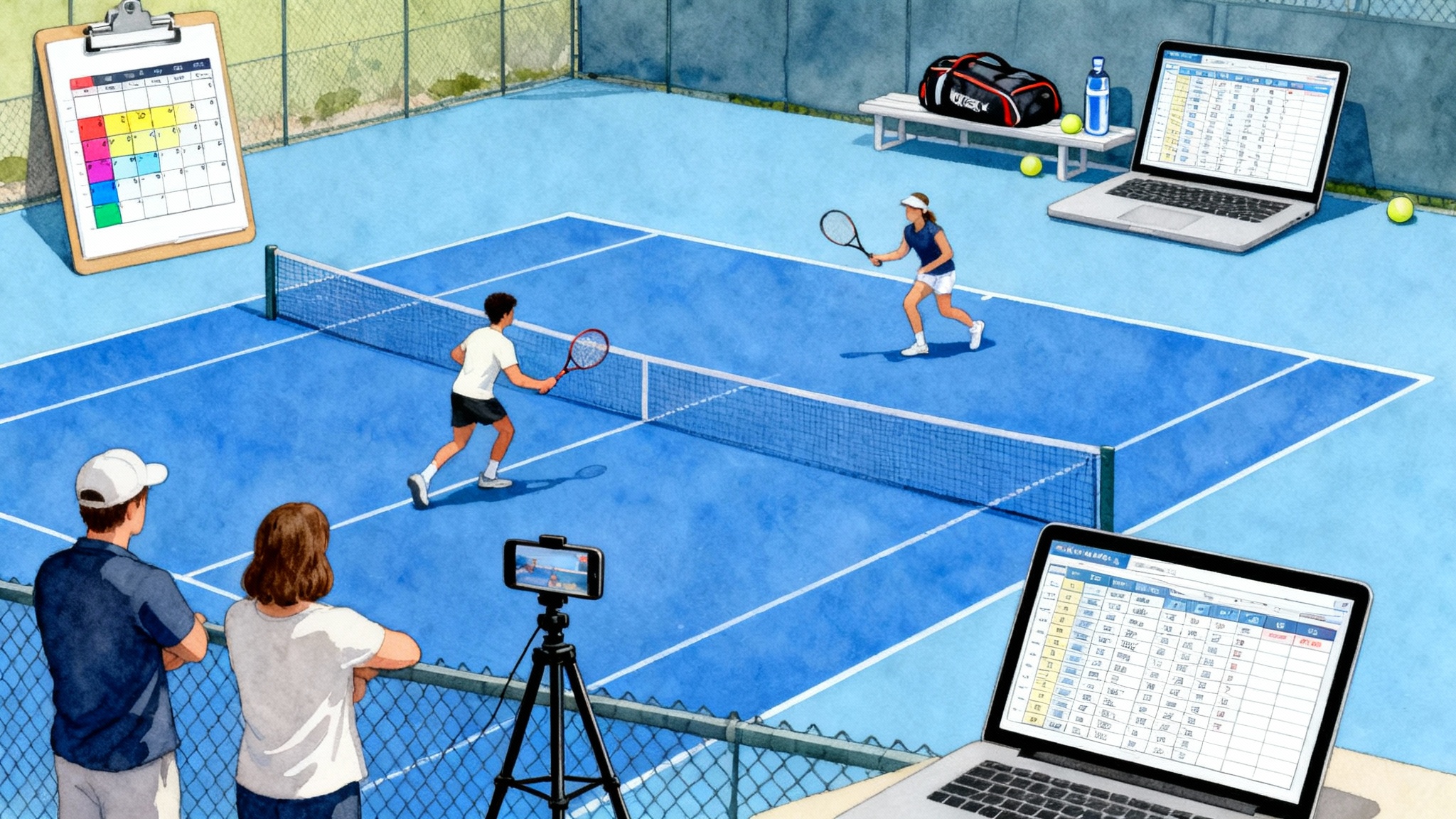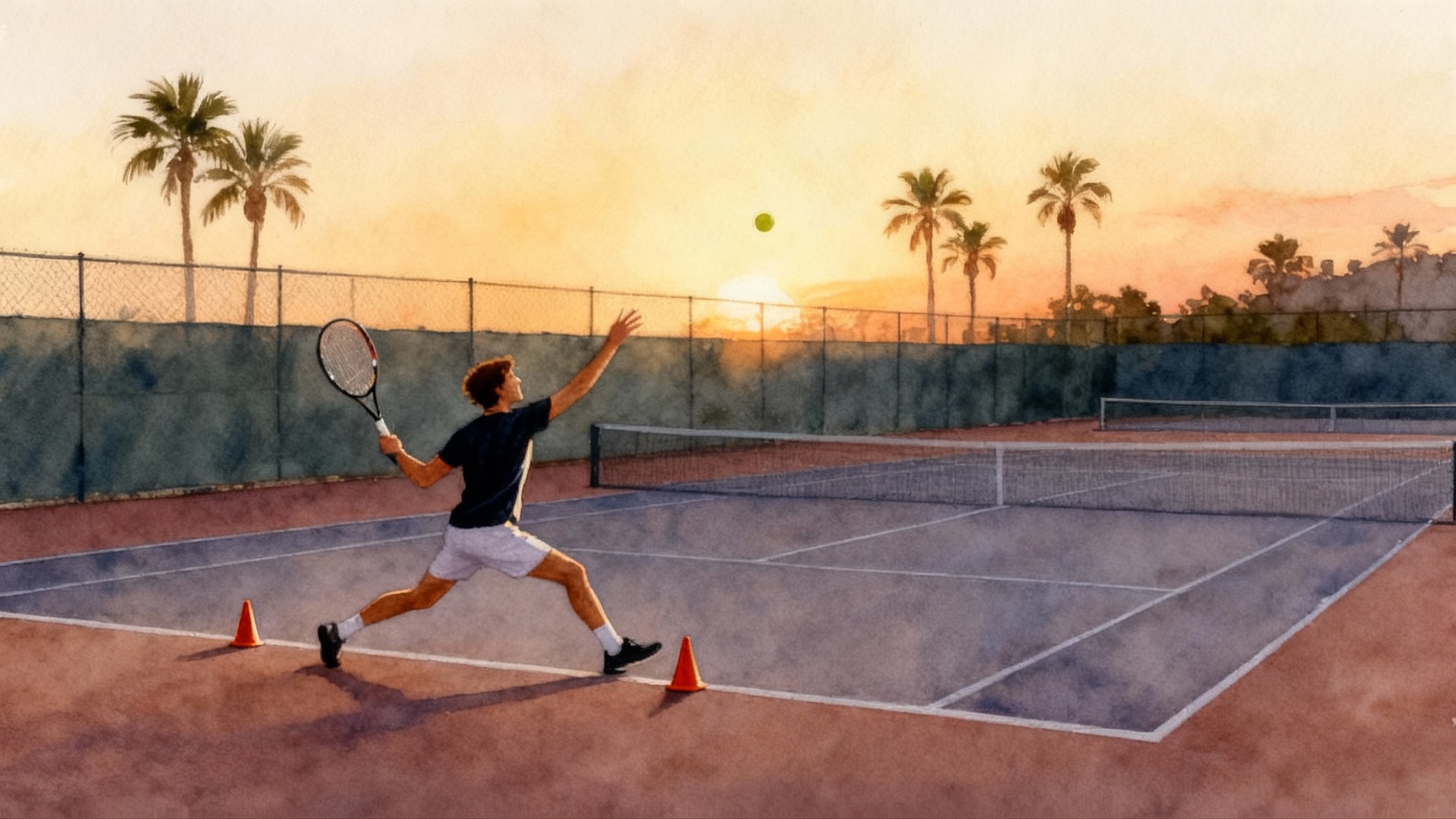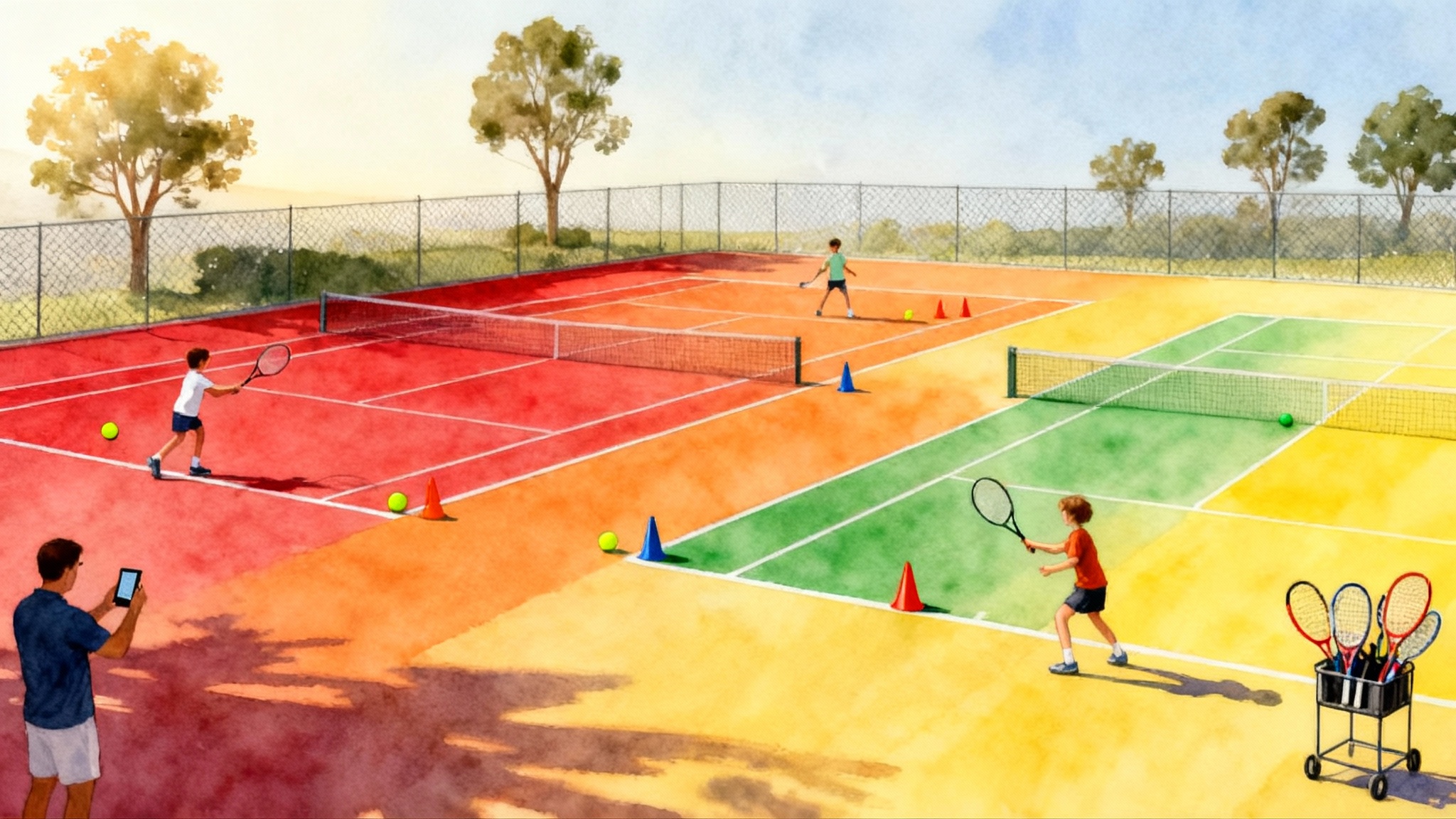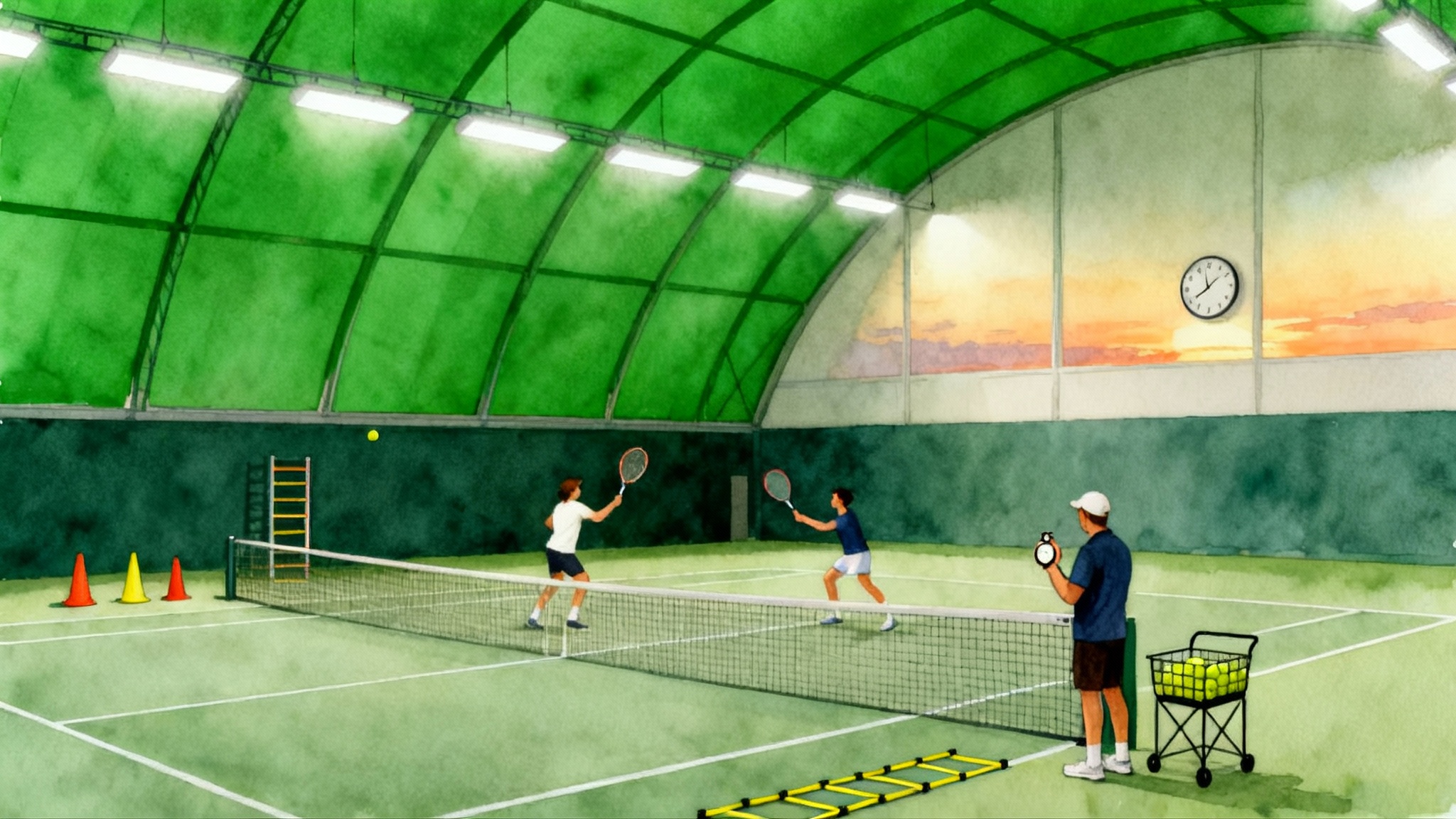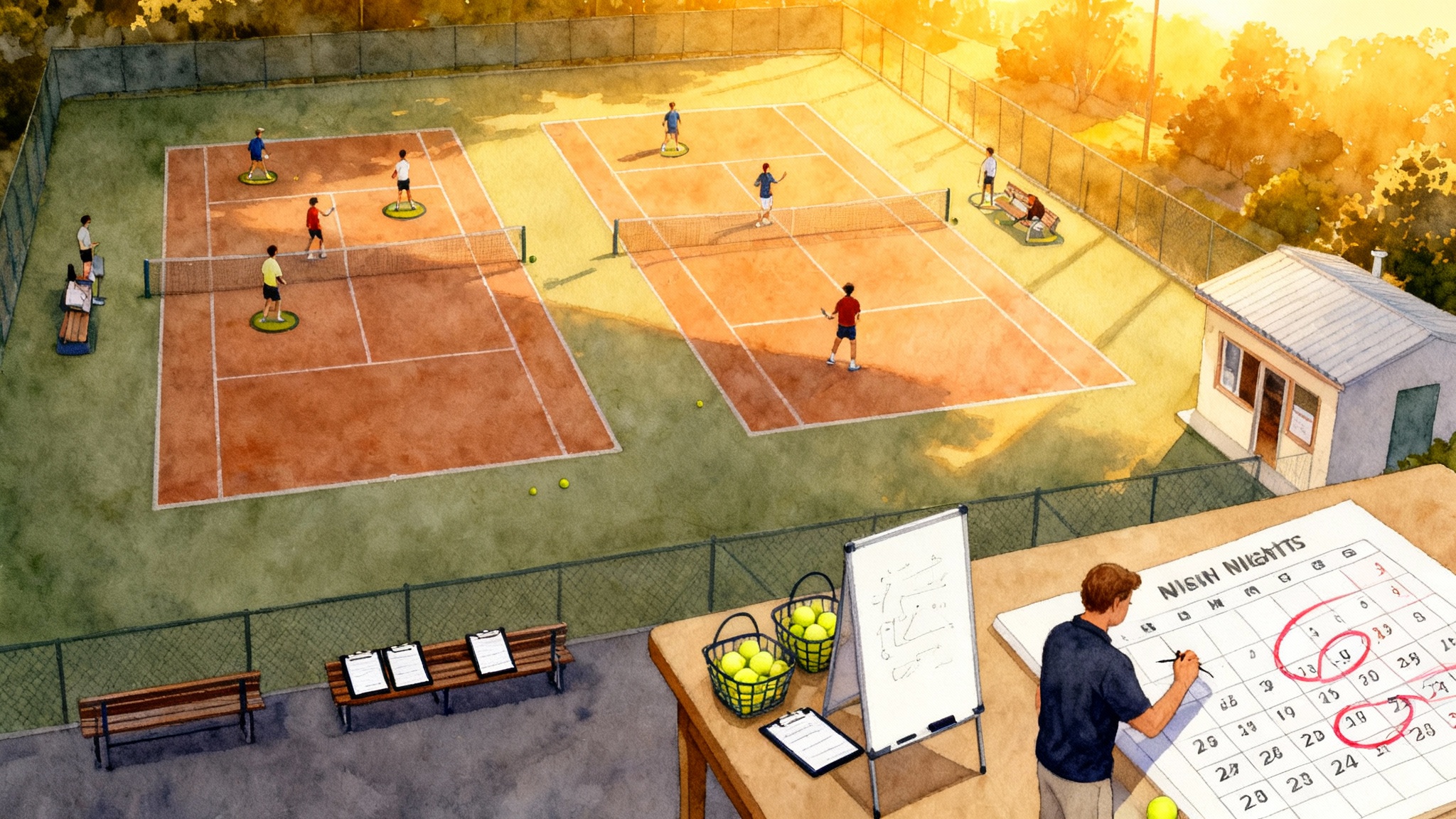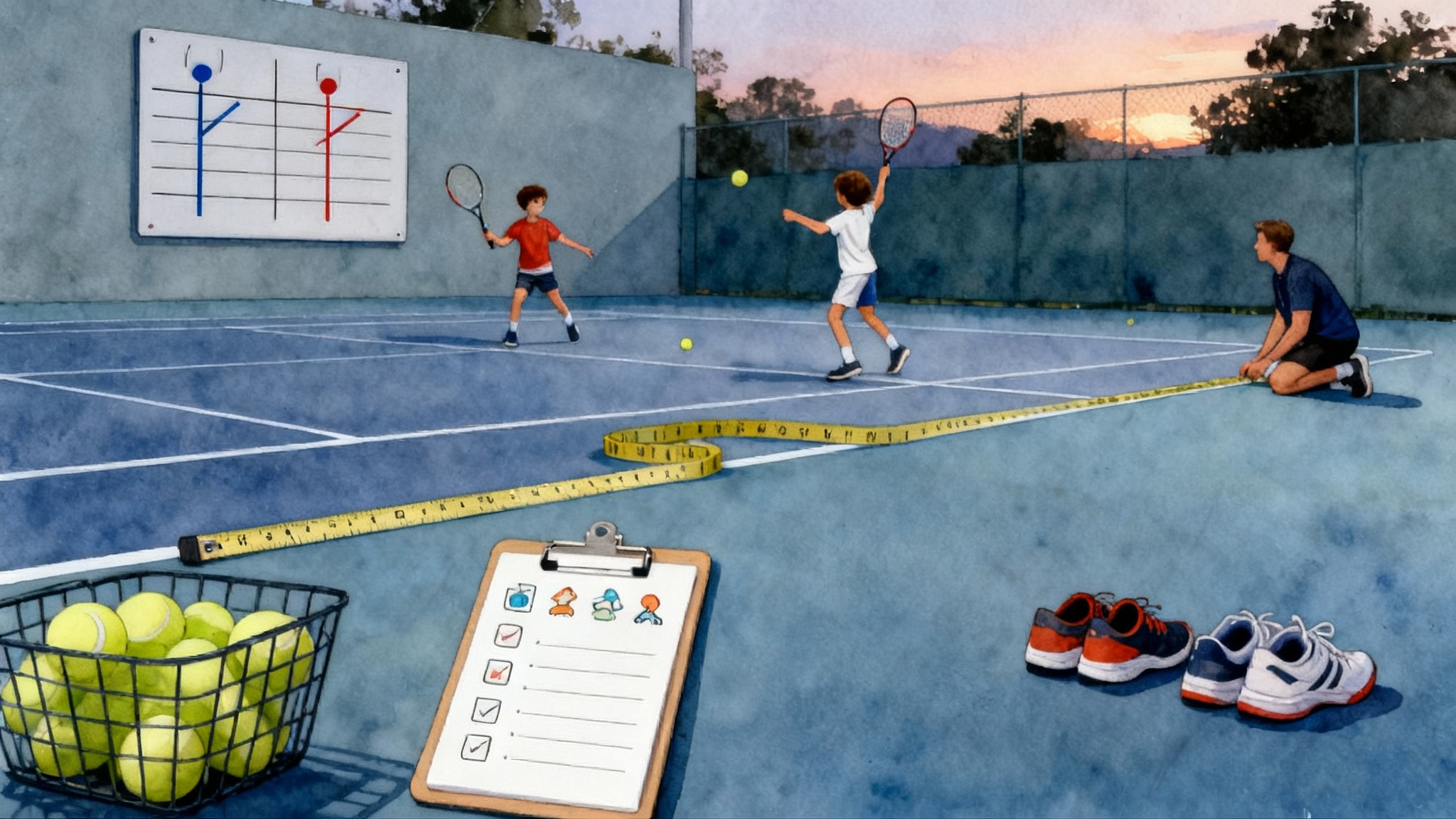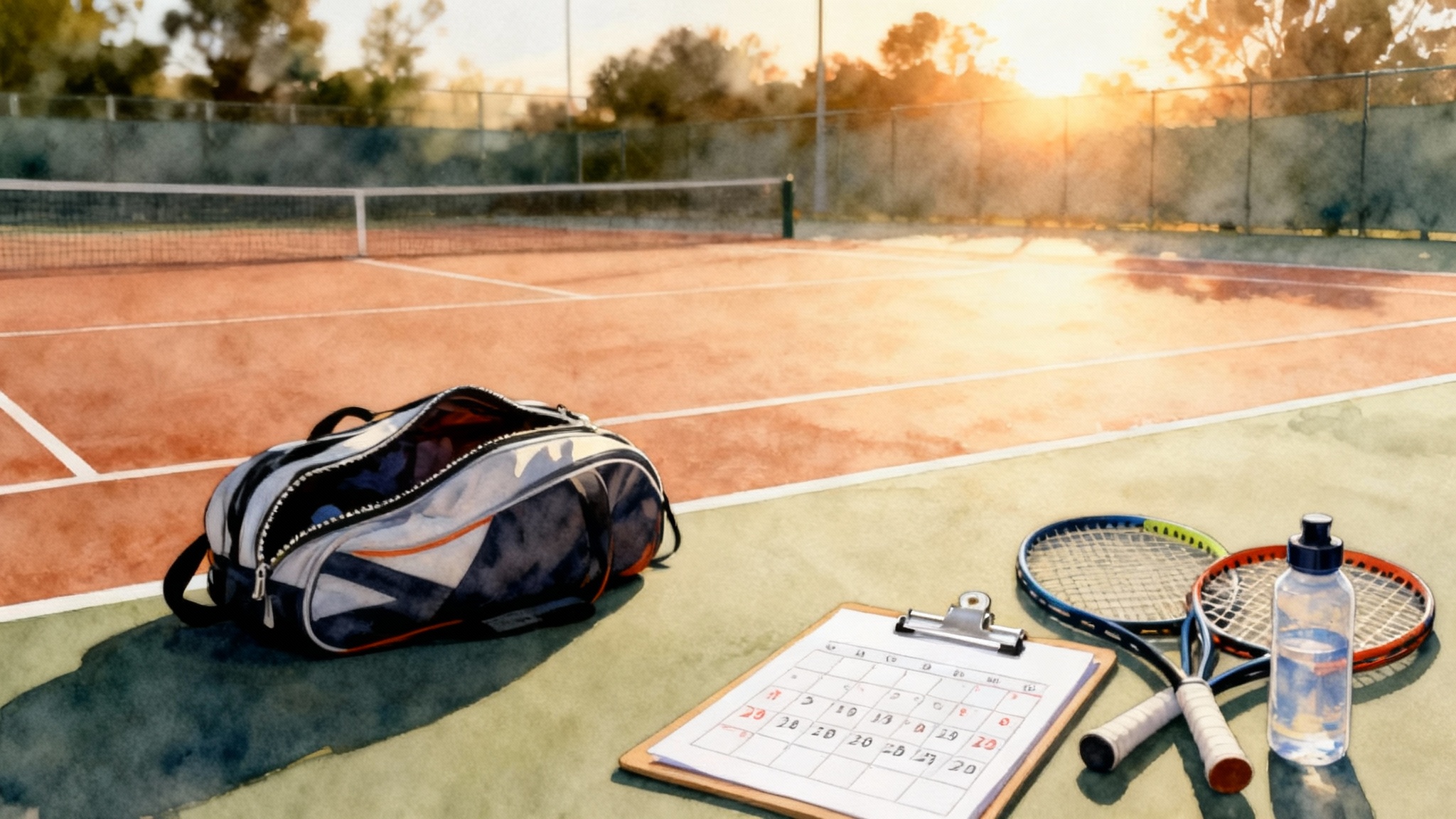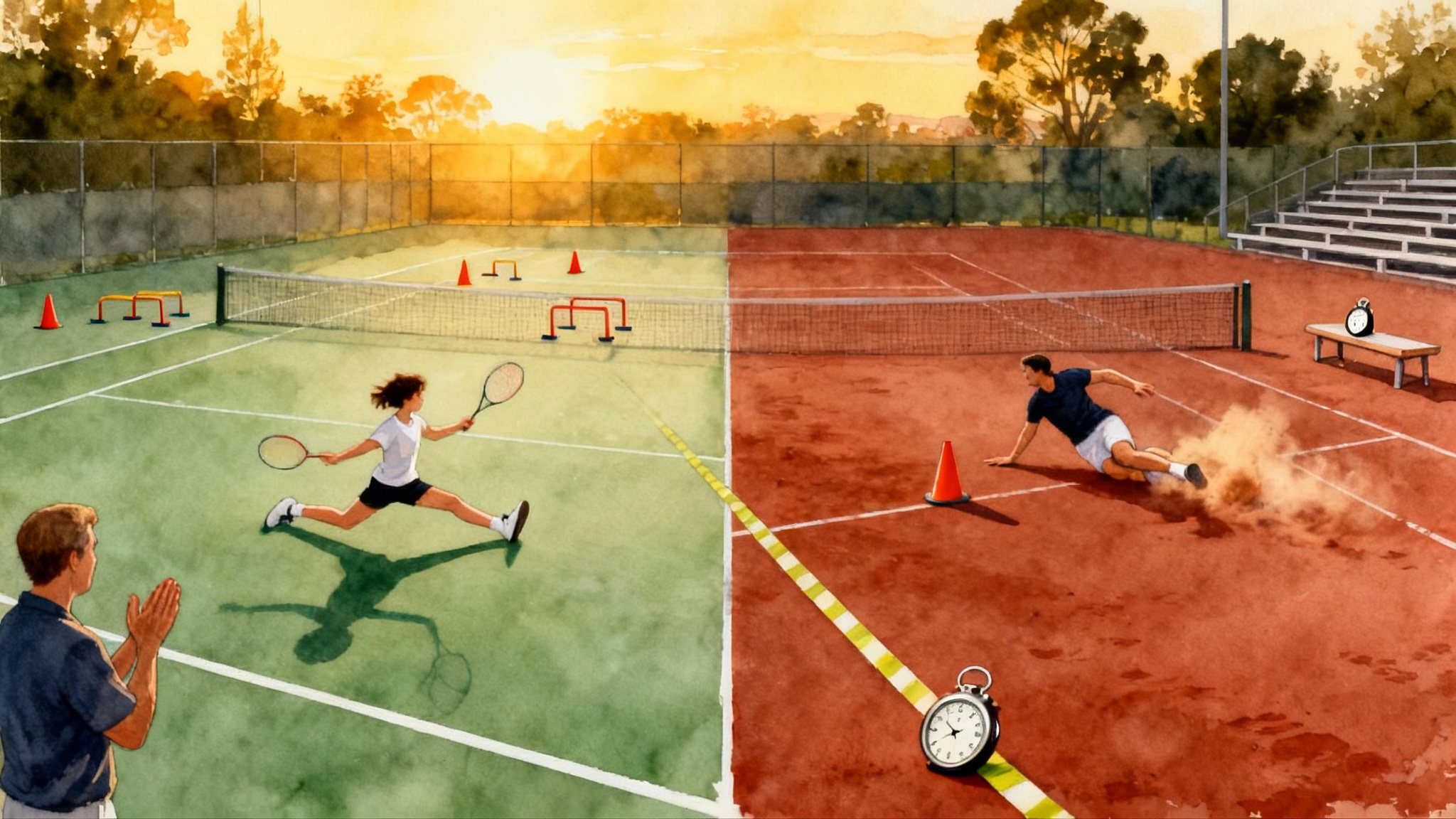Tennis Arm Care 2025: Age-Specific Shoulder and Elbow Prehab
A 10-minute, equipment-light plan for juniors, teens, and adults to protect shoulders and elbows. Includes weekly serve-volume caps, readiness checks, red-flag guidance, and an academy touchpoint for baseline screens and progress checks.
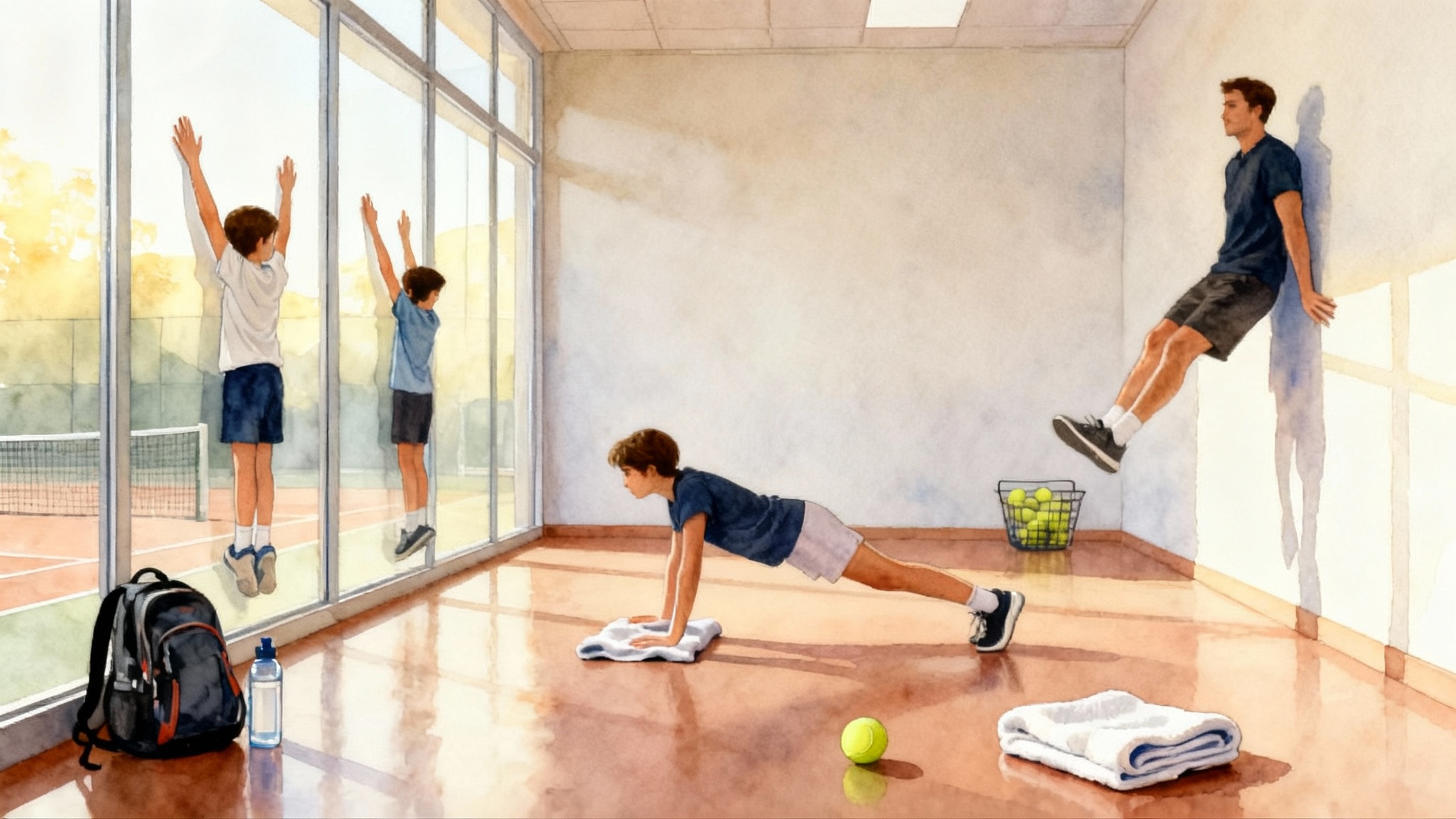
Why tennis arms break down in 2025
Racquet technology, year‑round play, and streaming‑fueled motivation put more serves and forehands into a single week than many bodies can handle. The result is predictable: irritated tendons, sore growth plates, and achy shoulders that steal rhythm and confidence. None of this is inevitable. With a short, well‑timed prehab routine and simple readiness checks, you can raise your tissue capacity faster than your calendar fills up. The United States Tennis Association’s sport science guidance has long emphasized that youth elbows and shoulders respond best when workload is planned and recovered on purpose. See their perspective in the USTA sport science resources.
This guide gives you three 10‑minute, equipment‑light routines by age band, weekly micro‑cycles that link serve‑volume caps with recovery, ready‑to‑use readiness checks, and clear red flags. Parents and adult players get practical rules they can apply today, not abstract theory.
The age factor: what changes from 9 to 16 to adult
- Ages 9 to 12: Growth plates are open and sensitive. Small, frequent doses of strength and coordination protect young elbows better than long sessions. The goal is movement quality and gradually increasing tolerance to basic forces.
- Ages 13 to 16: Rapid growth changes lever arms and timing. Teens often move like a new person every three months. Stabilizers need more specific work, and serve volume must respect growth spurts and exam weeks. For help timing training around growth, use our growth‑spurt‑smart tennis guide.
- Adults: Lifestyle and training history dominate. Desk posture, old sprains, and weekend spikes in volume create predictable hot spots. Adults need slightly heavier isometrics, better scapular control, and a stricter recovery plan.
Your equipment‑light toolbox
You can do everything below with items found at home.
- One tennis ball or a rolled‑up sock
- A towel
- A water bottle or small backpack you can load with books
- A wall and a table edge
- Optional: a light loop band if you have one
Readiness checks you can do in two minutes
Run these before you serve or hit. They set your day’s serve cap and help you decide whether to push, hold, or back off.
- Scap control check: wall slide and lift‑off
- Stand with back and forearms on the wall. Slide forearms up, then lift wrists one inch off the wall without shrugging. Hold for 3 seconds, 5 reps.
- Pass: smooth lift‑off without neck strain or rib flare. Fail: visible shrug, cramping, or inability to clear wrists.
- Action rule: if you fail, cut today’s serves by 30 percent and keep the prehab light.
- Grip squeeze baseline
- Squeeze a tennis ball at a steady rhythm for 30 seconds and count reps. Compare to your personal baseline on a good day.
- Green: within 5 percent of baseline, no elbow pain. Yellow: 6 to 10 percent drop or mild ache. Red: more than 10 percent drop or sharp pain.
- Action rule: green means full plan, yellow means serve cap minus 25 percent, red means skip serving and switch to the prehab only.
Keep a one‑line log in your notes app or use our printable serve journal template. Baselines become meaningful in seven to ten days.
Pain rules that keep you safe
Tendons and joint linings adapt to load, not to pain spikes. Use this simple standard during and after exercise: discomfort up to 3 out of 10 is acceptable if it settles to your normal within 24 hours. If pain climbs during a session or lingers the next morning above your usual, reduce load. For the science‑minded, Jill Cook’s tendinopathy framework explains why steady, progressive loading beats rest‑only approaches. Review the tendon pain continuum model for context on what to expect as you build capacity.
The 10‑minute prehab routines by age band
Each routine lasts 10 minutes. Set a timer. Move with smooth tempo and quiet breathing. If you have only five minutes, do the first three items.
Ages 9 to 12: make it skillful and light
- Shoulder blade setting, 60 seconds
- Stand tall, arms at sides. Gently draw shoulder blades down and slightly together, then release. Think of sliding them into your back pockets. Repeat small pulses.
- Wall angels, 1 minute
- Back and arms on the wall. Slide up and down while keeping ribs down. Smooth motion matters more than range.
- Forearm rotations with water bottle, 2 sets of 10 each way
- Elbow on knee or table, hold the bottle upright. Slowly rotate palm up, then down. Control the ends of range.
- Wrist extensor isometric, 3 holds of 20 seconds
- Rest forearm on table, hand hanging off. With the palm facing down, lift the hand slightly and hold. Use light effort that feels steady, not shaky.
- Tennis ball squeezes, 2 sets of 30 seconds
- Smooth rhythm. Stop if you feel sharp pain on the outside of the elbow.
- Shadow serve with soft finish, 2 sets of 8
- Toss and swing with relaxed arm. Land balanced. Focus on a high elbow and full follow‑through.
Progression: add one rep per set or three seconds per hold each week if you stay green on readiness checks.
Ages 13 to 16: build control under load
- Scapular push‑ups, 2 sets of 10
- In a plank, keep elbows straight and move only the shoulder blades as if you are spreading the floor, then gently pinching.
- Side plank with top arm external rotation, 2 sets of 8 each side
- In a side plank on knees or feet, hold a rolled towel between hands. Pull it apart lightly while keeping the neck relaxed.
- Eccentric wrist extensor lowering, 2 sets of 10
- Rest forearm on table, palm down, hand off edge. Lift hand with the other hand, then slowly lower for a 3‑count holding a water bottle or backpack.
- Forearm pronation and supination, 2 sets of 8 each way
- As in the younger plan, but use a slightly heavier bottle if you stay green.
- Tall‑kneel shadow serves, 2 sets of 6
- Kneel with hips tall and swing an abbreviated serve. This removes lower‑body noise and builds arm path awareness.
Progression: raise load by the smallest step you can manage, like adding one book to the backpack or one more rep per set each week while green.
Adults: capacity and posture‑friendly strength
- Wall slide with lift‑off and 1‑second pauses, 2 sets of 8
- The same movement used in the readiness check, now as training. Control the neck and ribs.
- Prone T raises on floor, 2 sets of 10
- Lie face down, arms out to a T with thumbs up. Lift arms slightly and hold for a 1‑count. Keep the chin tucked.
- Isometric external rotation, 3 holds of 20 seconds each arm
- Stand in a doorway with elbow at your side. Press the back of your hand into the door frame at moderate effort. No pain.
- Eccentric wrist extensor lowering with backpack, 3 sets of 8
- Same as teens but with a slower 4‑count down if you tolerate it.
- Farmer carry with grocery bag, 2 trips of 30 to 60 seconds
- Pack a bag so it feels challenging but steady. Walk tall with a soft elbow bend and relaxed shoulder.
Progression: extend holds by five seconds or add five to ten percent load every 7 to 10 days if next‑day pain stays at or below your normal.
Weekly micro‑cycles that link serve caps to recovery
You will not get hurt counting exercises and ignoring the calendar. Serve volume drives arm load more than any other metric.
General rules
- Never increase weekly serves by more than 10 to 15 percent.
- Count only first and second serves. Warm‑up shadow serves do not count.
- If school tests, travel, or growth spurts are happening, treat the week as yellow and use the adjusted caps below.
Ages 9 to 12: starter micro‑cycle
- Monday: prehab plus 40 serves, groundstrokes 30 minutes
- Tuesday: prehab only, movement games 20 minutes
- Wednesday: prehab plus 50 serves, light points 20 minutes
- Thursday: rest or other sport
- Friday: prehab plus 60 serves, serve targets 15 minutes
- Saturday: match or practice set, cap serves at 30
- Sunday: full rest
Yellow week adjustment: cut each serve number by 25 percent. Red day: skip serving and do the 10‑minute routine only.
Ages 13 to 16: growth‑aware micro‑cycle
- Monday: prehab plus 60 serves, strokes 30 minutes
- Tuesday: prehab only, footwork 20 minutes
- Wednesday: prehab plus 70 serves, return practice 20 minutes (see return of serve patterns)
- Thursday: rest or cross‑training
- Friday: prehab plus 80 serves, target practice 20 minutes
- Saturday: match day, cap total serves at 50
- Sunday: rest and mobility walk 30 minutes
If a growth spurt is obvious or exams are heavy, use yellow caps at 45, 55, 65, and 40 respectively.
Adults: performance with recovery
- Monday: prehab plus 60 serves, rally 30 minutes
- Tuesday: prehab only, easy cardio 20 minutes
- Wednesday: prehab plus 70 serves, return practice 20 minutes
- Thursday: rest or mobility
- Friday: prehab plus 80 serves, target practice 20 minutes
- Saturday: match day, cap total serves at 50 to 60 based on readiness
- Sunday: rest or walk 30 minutes
Travel or busy work week: move Friday’s session to Saturday and keep match to a single set or doubles only.
Red flags: stop and get eyes on the problem
- Night pain that wakes you
- Visible elbow or shoulder swelling
- Numbness or tingling into ring and little finger
- Loss of range of motion after an incident, especially inability to fully straighten the elbow
- Pain above 3 out of 10 that lingers more than 24 hours after reducing activity
Action: stop serving for 48 hours, do only gentle range‑of‑motion, and book a professional screen. If you are near us, use our progress check booking to find the next slot.
How to make the routines stick
- Pair the 10‑minute block with something you already do. Before homework for juniors, before emails for adults.
- Use a visible timer. The short, fixed window creates focus.
- Keep the gear in one bag. Ball, towel, band, water bottle, notebook.
- Log serves and readiness in one line. Example: M 60 serves, scap pass, grip 58 reps, elbow 1 out of 10.
The academy touchpoint: baseline screens and monthly check‑ins
We like simple at‑home work, but we also like baselines you can trust. Schedule a 20‑minute baseline screen for shoulder range, scap control, and elbow tendon tolerance with our coaches. We run Schoolyard Tennis Academy’s monthly arm‑care clinic where we test your current capacity, adjust your serve cap, and show you one progression you can use for the next month. Save your spot through the monthly arm‑care clinic page.
At the baseline session we will
- Measure active shoulder rotation and flexion
- Score your wall slide and lift‑off
- Check wrist extensor tenderness and strength with a simple isometric
- Set your green, yellow, and red thresholds by age and training status
- Create a one‑page plan you can share with your coach or parent
Follow‑up takes 10 minutes once a month. If your readiness stays green and next‑day pain stays normal, your serve cap rises. If not, we adjust before discomfort turns into time off.
Frequently asked questions
What if I only play twice a week?
Keep the 10‑minute routine on court days and do a 5‑minute mini on one off‑day. Your tissue capacity grows slowly without steady inputs.
Can I replace the backpack with a dumbbell?
Yes. Choose the smallest dumbbell that keeps effort at a 6 out of 10 and pain at or below 3 out of 10.
Do I need a band?
Helpful, not required. Towel isometrics and bodyweight positions cover the basics for the first month. If you hit your progression targets, add a light loop band next.
How soon should pain improve?
Most players notice easier serves and fewer next‑day aches within two to three weeks if they follow the caps and the prehab. Tendons remodel slowly, so be patient.
The takeaway, as a checklist
- Run readiness checks before you serve. Scap control and a 30‑second squeeze take two minutes and give you the day’s plan.
- Do your 10‑minute routine based on age. Quality beats novelty.
- Respect weekly serve caps and adjust for school, travel, or growth. See the teen section and our growth‑spurt‑smart tennis guide.
- For return days, apply the cues in return of serve patterns.
- Log simple data. Green stays green. Yellow gets trimmed. Red rests.
- Use the monthly clinic to set baselines and progress with confidence. Keep notes in the serve journal template.
A smart finish
Tennis rewards players who manage rhythm. Your arm is the same. Small, steady inputs create a shoulder and elbow that handle pace, spin, and long days without complaint. The plan above fits into real life and gives parents, juniors, and adult players the same advantage pros enjoy. Put the routine on your calendar, count your serves, listen to your readiness checks, and let your game grow on a foundation that lasts.
